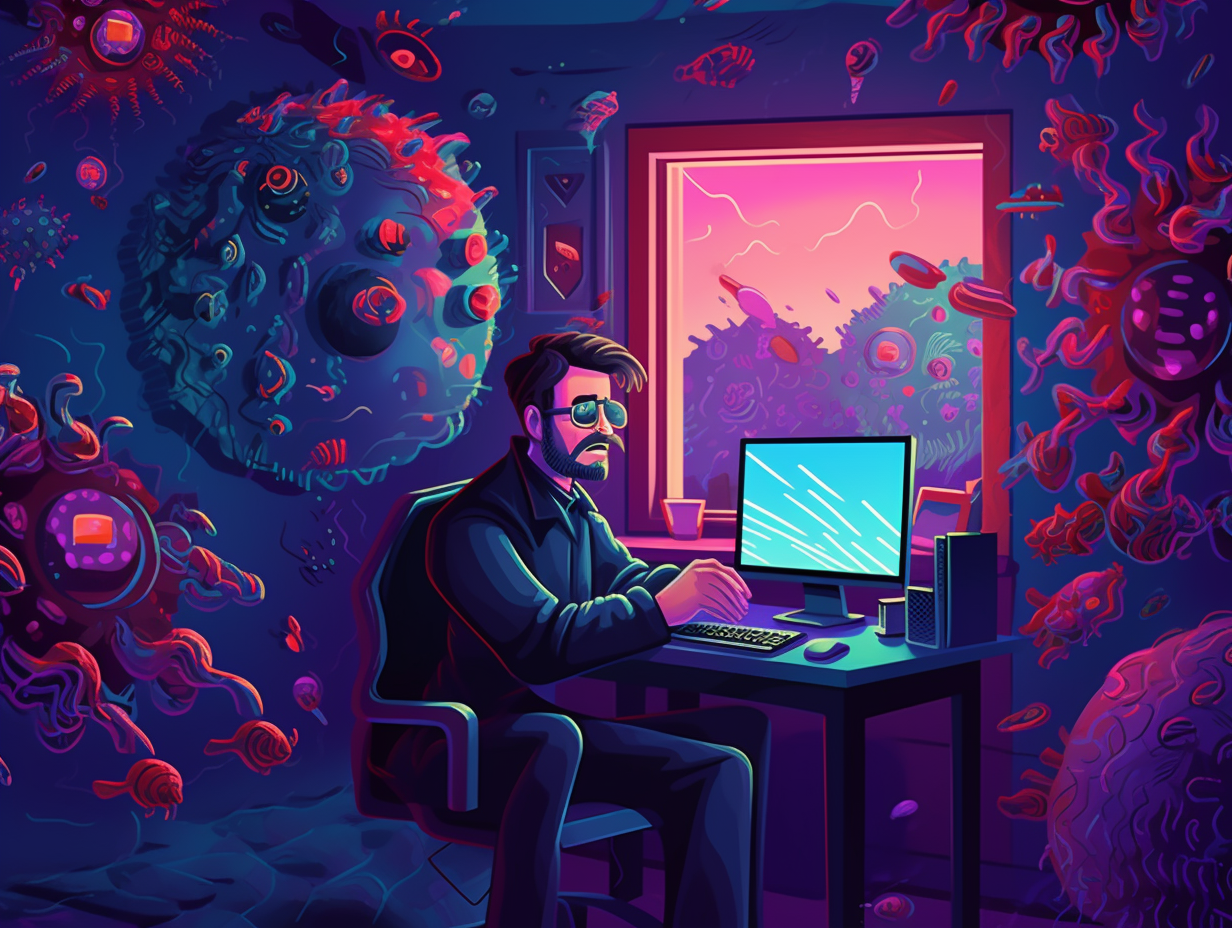Decode the Fun: Top 10 Entertaining Facts About Coding You Need to Know!

1. The Origin of "Computer Bug"
In the earliest days of computer history, programmers encountered a different kind of "bug" in the system than what one might expect: a literal flying creature creating chaos within the machine's circuits! The hysterical prelude: The term "computer bug" was first coined on September 9, 1947, when a moth became trapped between relay contacts in the Harvard Mark II computer. Grace Murray Hopper, responsible for its discovery, ensured its place in history by taping the moth into the log book, forever entwining the world of computer programming and moth memes.
Source => computerhistory.org
2. Algorithms: The Magical Unicorns of Coding
In the land of multilingual programming, algorithms roam free like unicorns, unbridled by the shackles of any specific coding tongue: These magical problem-solvers can be implemented in numerous languages, making them a universal and versatile weapon in every coder's arsenal.
Source => simplilearn.com

Did you know? Guido van Rossum named his programming creation "Python" as a tribute to Monty Python, but also for its short, unique, and enigmatic characteristics! 🐍🎪 Discover more behind this amusing origin story...
=> Fun Facts about Python
3. First Digital Image: Baby's First Pixels
Before pixels were keeping us up at night with never-ending Netflix binges, one ingenious dad was using them for some quality father-son bonding: In 1957, Russell Kirsch created the first digital image, a charming 76 x 76 pixel snapshot of his baby boy Walden, pioneering the world of digital imaging with the help of a nifty rotating drum scanner and SEAC, one of America's first programmable computers.
Source => hackaday.com
4. Python's Monty Python Connection
Did you ever wonder if Monty Python's Flying Circus housed a secret, snake-loving computer scientist? Well, they didn't actually, but here's the twist: Guido van Rossum, the creator of the Python programming language, was inspired by his love for the hilarious comedy group while designing Python during the Christmas break in 1989. And, despite what the rumors might suggest, no Italian professor played a role in the serpentinely comedic inception of this wildly popular coding language.
Source => en.wikipedia.org

5. Input Validation: The Coding Sorcery
Ladies and gentlemen, gather 'round and behold the magical, impenetrable force field against virtual evildoers: the sorcery of input validation! *Drumroll, please*: By ensuring user-supplied data complies with the expected format on the server side, input validation serves as the first line of defense for secure coding, making your application a resistant fortress against myriad attacks without breaking a sweat or conjuring a spell.
Source => littlemaninmyhead.wordpress.com
6. White Space: The Dumbledore's Army of Coding
Who needs semicolons when you've got killer white space skills, right? It's like the Dumbledore's Army of coding: Some programming languages, such as Python and Ruby, utilize white space instead of semicolons to mark the end of a statement, offering improved readability yet demanding geek-level precision to avoid errors during execution.
Source => lenovo.com
7. Hex Codes: From Maxwell to CSS
Before Instagram filters and your grandma's inexplicable fascination with rose-tinted glasses, there was a chap named Maxwell juggling math, arts, and colors like a true Renaissance man: In 1861, mathematician James Maxwell developed the first color photograph using RGB color theory, leading to the creation of hex codes that currently allow over 16 million colors to play nice in the world of HTML, CSS, and digital game design.
Source => history-computer.com
8. RUR: The First Robot Revolution
Before the rise of Roombas and Siri, there was RUR: the original Robotic Utilities and Repairs, or more simply put, Rossum's Universal Robots – "ros" for "rossum" and "bot" for "you know what!" : The term "robot" was coined in 1920 by Czech playwright Karel Capek in his play "RUR," deriving from the Old Church Slavonic word "rabota," which means servitude or forced labor. Capek envisioned a company employing emotionless, biotechnology-based workers for all those pesky tasks humans just didn't want to do, and nearly named them "labori" before deeming it too bookish.
Source => npr.org
9. Clippy: The Creepily Trustworthy Assistant
Move over Romeo, Clippy's got his eyes on you: The infamous Microsoft Word assistant, Clippy, was designed based on research by Clifford Nass and Byron Reeves that emphasized the importance of large, trustworthy eyes for promoting a social and natural human-computer interaction. However, Clippy's constant male gaze ended up being considered creepy by some women in the focus groups.
Source => seattlemet.com

10. COBOL: The Boss of Programming Languages
Age may bring wrinkles to languages, but COBOL wears its wrinkles like a boss, refusing to let the new kids on the block steal its thunder: Developed in 1959, COBOL is still the most widely used programming language, predominantly in the financial and business sectors, for its simple, standardized, and highly portable nature, even as the world turns to Java, .NET, and C++ to make up for the dwindling tribe of silver-haired COBOL wizards.
Source => techtarget.com
Related Fun Facts




















